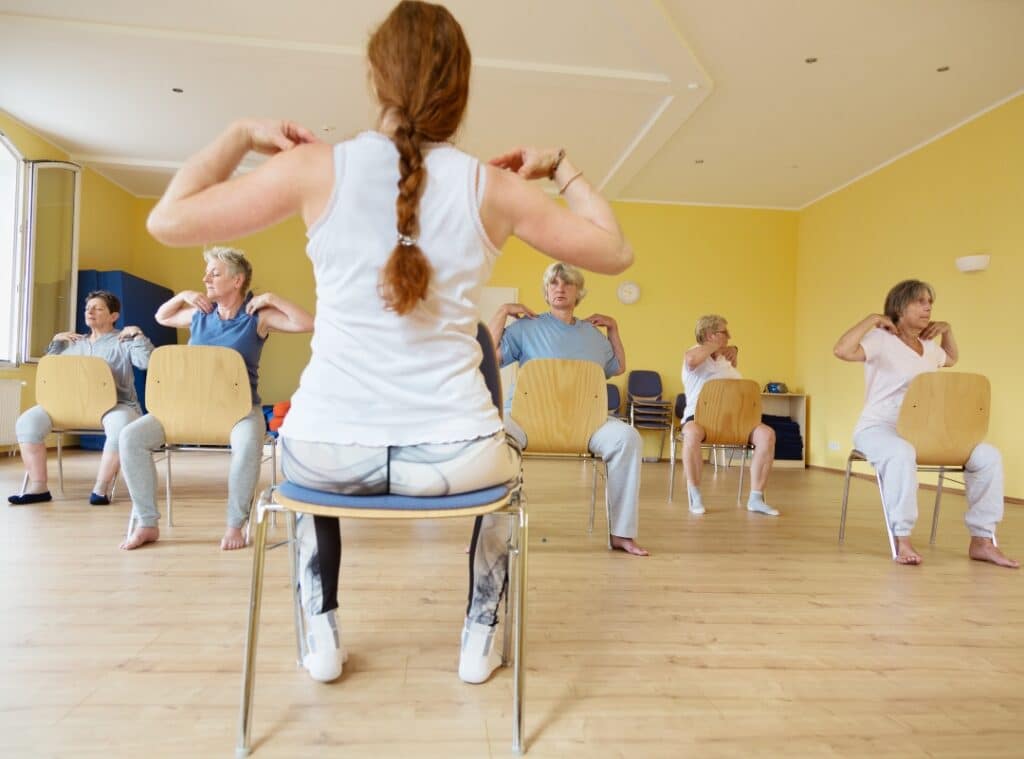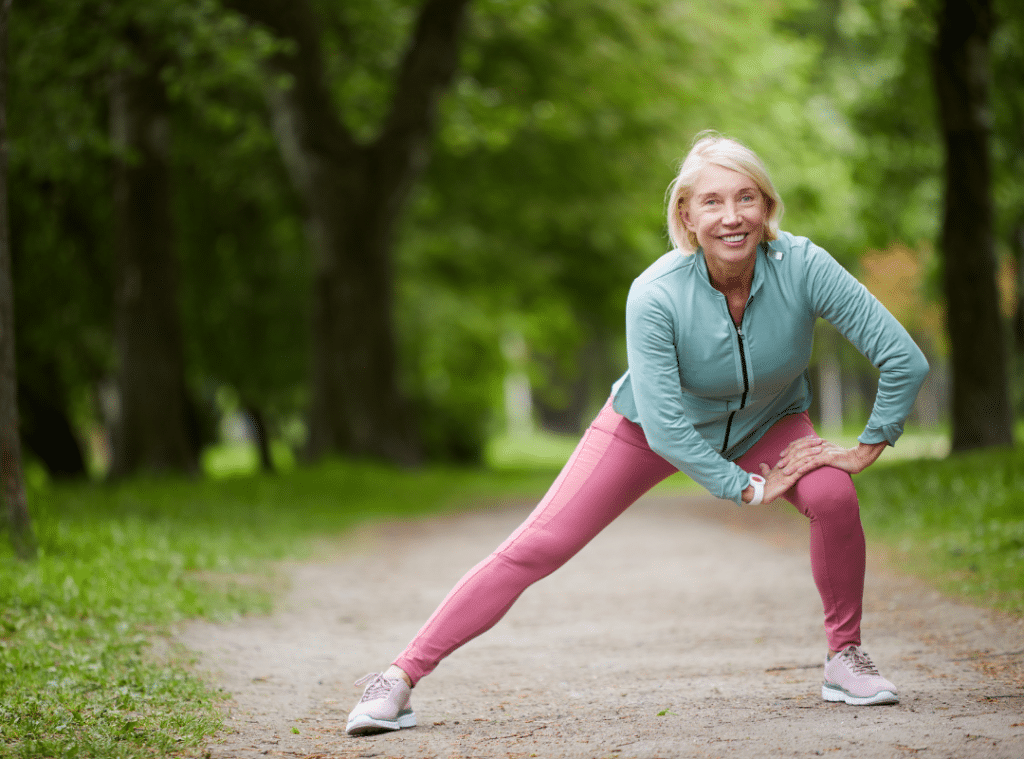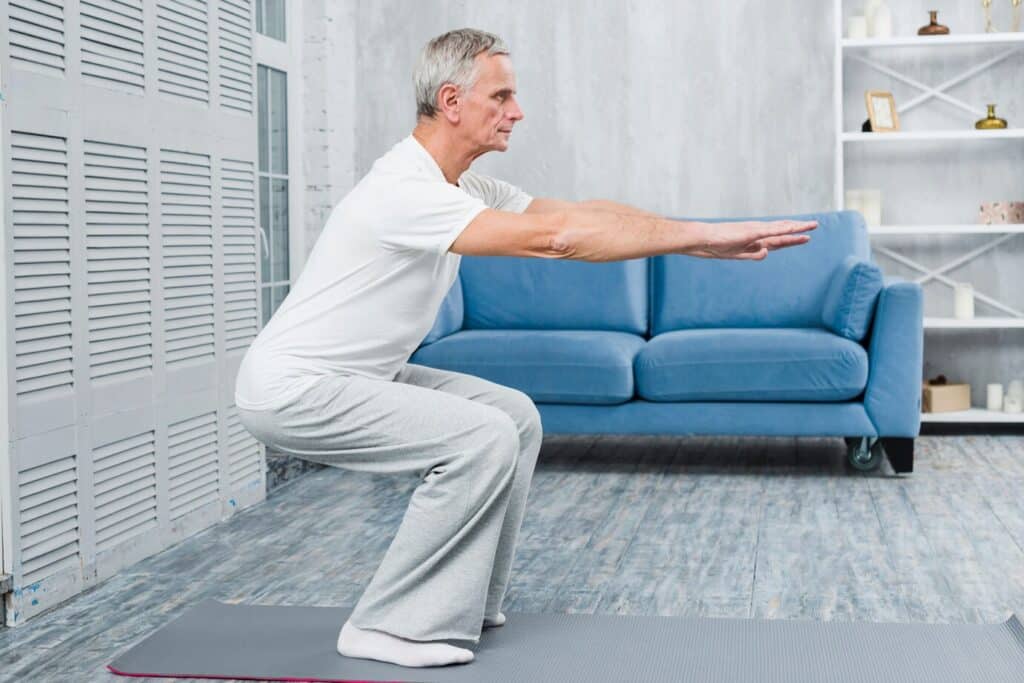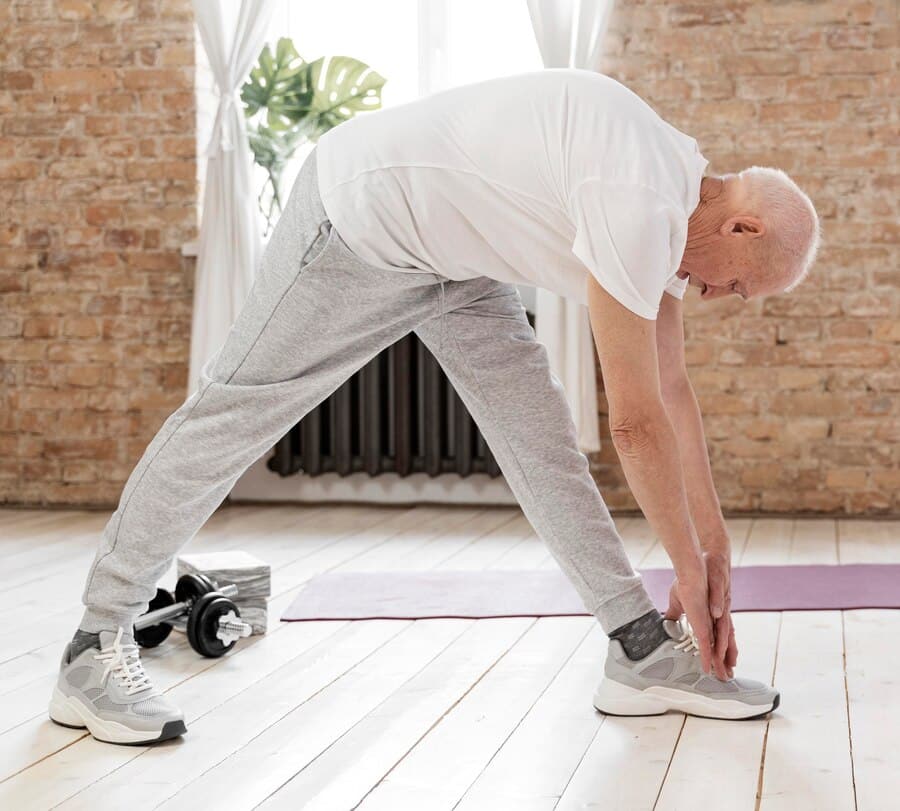Maintaining proper posture as we age is essential to preserving independence, mobility, and overall health. Posture exercises for seniors not only enhance alignment but also help reduce the risk of falls, alleviate pain, and improve confidence in daily activities.
At Westmont of La Mesa, we focus on empowering older adults through fitness routines that improve core strength, spinal flexibility, and balance. Below, you’ll discover effective postural exercises for the elderly that can help restore strength, ease discomfort, and support a healthier lifestyle.
For more information on how we support seniors in maintaining their health, visit us at Westmont of La Mesa.
The Importance of Good Posture for Seniors
Good posture is more than just standing tall—it plays a vital role in overall wellness. As seniors age, poor posture can lead to a host of issues such as back pain, poor circulation, and increased fall risk. By incorporating stretches for good posture and mobility-enhancing routines, older adults can maintain independence and enjoy a better quality of life.
Proper alignment:
- Reduces strain on joints and muscles
- Enhances balance and coordination
- Improves respiratory and digestive functions
- Contributes to a more youthful appearance
One of the simplest ways to start improving posture is through low-impact, consistent movement. Adding posture exercises for seniors, like shoulder squeezes or exercises to straighten the spine, can create positive long-term effects. Engaging in dynamic balance exercises can also help you build stability while enhancing posture awareness.
Shoulder Blade Squeezes: Strengthen Your Upper Back
Postural exercises for the elderly don’t need to be intense. Shoulder blade squeezes are an easy yet powerful movement to combat rounded shoulders and promote spinal alignment.
How to perform:
- Sit or stand up tall with arms relaxed at your sides.
- Squeeze your shoulder blades together as if trying to hold a pencil between them.
- Hold for 5 seconds, then release.
- Repeat 10–15 times.
This move activates the upper back muscles that often weaken with age. Incorporating this into your daily routine can enhance posture and reduce your risk of shoulder strain. Also, strengthening the lower body through leg exercises is equally important for mobility and posture stability.
Cat-Cow Stretch: A Classic for Spinal Mobility
A favorite among physical therapists, the Cat-Cow stretch supports flexibility and spine mobility, critical components of physical therapy for posture.
How to perform:
- Begin on hands and knees.
- Inhale as you arch your back (Cow position), lifting your head and chest.
- Exhale as you round your back (Cat position), tucking your chin.
Repeat this movement for 1–2 minutes, focusing on fluid transitions.
Benefits:
- Loosens tight spinal muscles
- Improves circulation
- Relieves tension in the shoulders and lower back
- Boosts body awareness
This exercise is one of the top exercises seniors can perform regularly to reduce stiffness and improve flexibility. The improved mobility it offers is foundational for upright posture and daily movements.
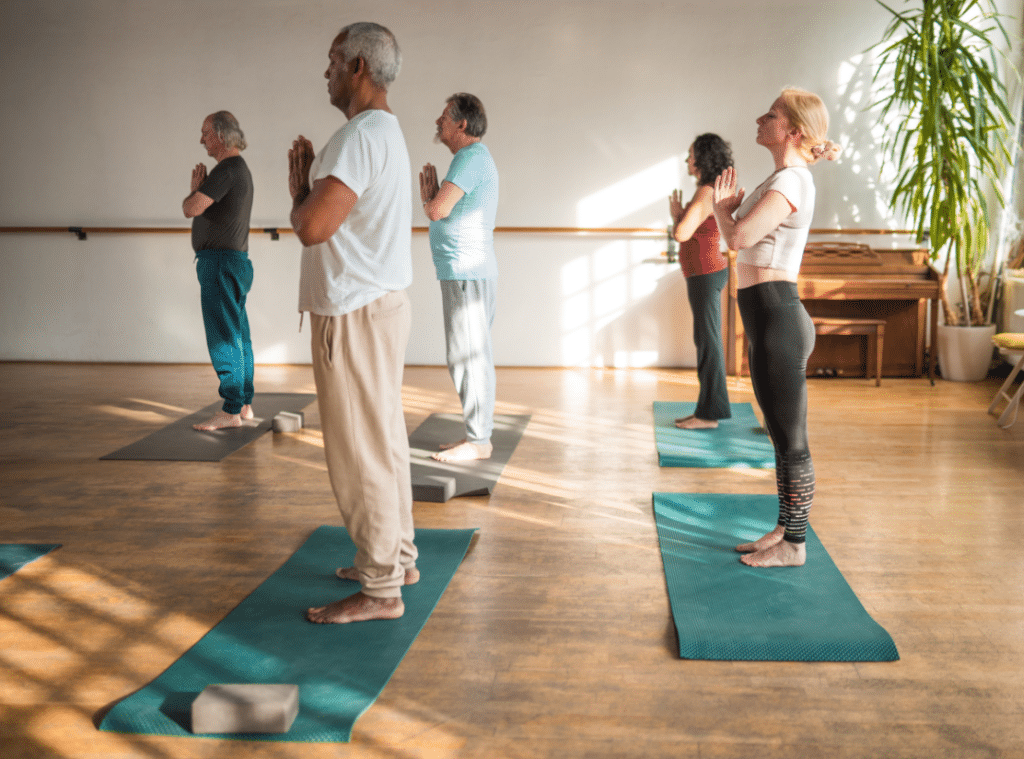
Wall Angels: Boost Shoulder and Spine Health
Another excellent postural exercise for the elderly, Wall Angels, focuses on strengthening the shoulders and upper back, two areas that contribute significantly to posture.
How to perform:
- Stand with your back flat against a wall.
- Raise your arms to a “goalpost” position, keeping elbows and hands in contact with the wall.
- Slowly raise and lower your arms like making a snow angel.
- Perform 2–3 sets of 10 repetitions.
Key Benefits:
- Corrects shoulder positioning
- Promotes neutral spine alignment
- Reduces upper back tightness
- Enhances balance and coordination
Wall Angels are especially beneficial for individuals who spend time sitting or hunching over, as they retrain the muscles for upright posture.
Pelvic Tilts: Strengthen Core and Stabilize the Spine
Your core muscles are essential for maintaining posture and preventing back pain. Pelvic tilts are one of the best exercises to straighten the spine and protect it from strain.
How to perform:
- Lie on your back with knees bent and feet flat.
- Tighten your abdominal muscles and press your lower back gently into the floor.
- Hold for 3–5 seconds, then relax.
- Repeat 10–15 times.
This small but mighty movement improves lumbar spine support and enhances hip flexibility, making it easier to sit and stand tall.
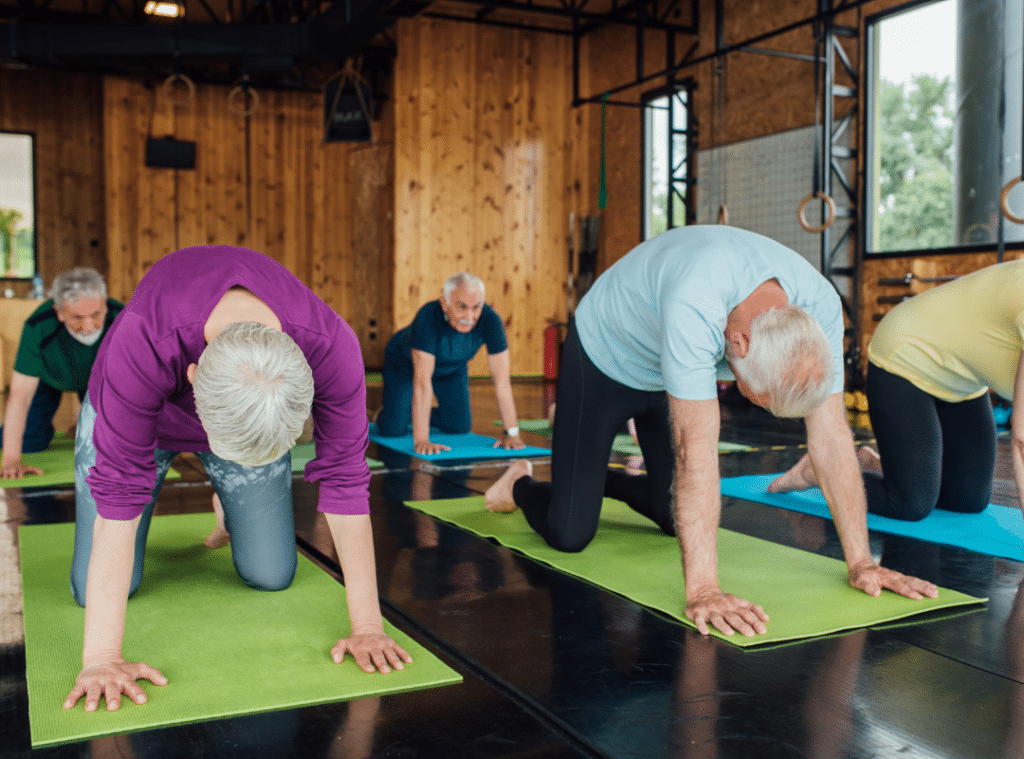
Plank Variations: Build Core Strength for Upright Posture
Planks are a cornerstone of many physical therapy routines for posture because they engage multiple muscle groups simultaneously.
Variations to try:
- Basic Plank: Start on forearms and toes; hold for 20–30 seconds.
- Side Plank: Lie on one side, supporting your body with one arm; hold to build oblique strength.
- Plank with Shoulder Taps: Alternate tapping each shoulder while in plank position to improve stability.
These variations target the deep core muscles that support your spine. When done consistently, they enhance posture, balance, and functional strength.
Combining Movement and Awareness
The best posture exercises for seniors aren’t just about physical movement—they’re also about increasing body awareness. Combining stretches for good posture, like yoga or tai chi, with strength training provides a holistic approach to upright alignment.
Resources like SilverSneakers offer helpful video guides for seniors starting out, while Healthline’s article on spine stretches includes practical visuals to follow along safely.
How Posture Affects Daily Life
Better posture makes everyday tasks easier, from walking and standing to carrying groceries or reaching overhead. It also contributes to mental well-being, with studies showing that standing tall can elevate mood and self-confidence.
By integrating posture exercises for seniors into your weekly routine, you’re choosing to age actively and purposefully. Consistent practice also reduces the risk of falls, a major concern in aging populations.
Westmont of La Mesa’s Supportive Approach
At Westmont of La Mesa, we encourage each resident to live actively and healthfully. Our wellness programs include group fitness, balance training, and access to staff well-versed in physical therapy for posture. Whether you’re starting from scratch or enhancing your existing routine, our community is here to help.
We also recommend exploring mobility exercises that support flexibility and stability in everyday movements. From group classes to one-on-one support, your goals are within reach.
Rise Tall with Confidence and Strength
Embracing a routine of posture exercises for seniors empowers you to live with strength, grace, and confidence. Simple movements like shoulder blade squeezes, exercises to straighten the spine, and stretches that improve spinal alignment make a lasting impact on your overall health.
At Westmont of La Mesa, we’re committed to guiding seniors toward better posture, mobility, and wellness. It’s never too late to start moving with intention. Stand taller, breathe easier, and enjoy a more vibrant life with every stretch and step you take.
For more information or to learn about our programs, call us at 619-369-9700. Ready to see our community? Schedule a tour at this link.
Discover the level of care you or your family member requires. What Level of Care Do You Need?
Frequently Asked Questions
How do you fix stooped posture in the elderly?
Fixing stooped posture in the elderly often involves a combination of stretching, strengthening, and postural awareness exercises. Physical therapy can help target weak back muscles and tight chest muscles that contribute to poor alignment. Gentle activities like yoga and tai chi can improve flexibility and core strength. In some cases, posture correction braces may provide temporary support while new habits are built.
Can poor posture be corrected in old age?
Yes, poor posture can be improved in old age with consistent effort and the right approach. Aging naturally weakens muscles and reduces flexibility, but targeted exercises and physical therapy can reverse some of these effects. Strengthening the core, upper back, and shoulders is especially helpful. It’s never too late to start improving posture with guidance from a healthcare professional.
What is the best exercise to fix posture?
One of the best exercises to improve posture is the wall angel. This move strengthens the upper back and shoulders while encouraging proper alignment of the spine. Other helpful exercises include chin tucks, scapular squeezes, and bird-dog movements. Consistency and proper form are key to seeing results over time.
What is the number one exercise for seniors?
Walking is widely considered the number one exercise for seniors due to its low impact and cardiovascular benefits. It helps maintain mobility, balance, and endurance without putting too much stress on the joints. In addition to walking, exercises like chair yoga and resistance training are excellent for overall senior fitness. The best routine combines aerobic, strength, flexibility, and balance training.



